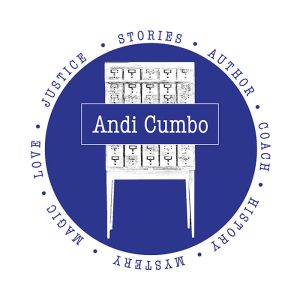I can imagine them sometimes, their bodies so weary, the light so scarce, the cold so great. Bare feet stumbling as fast a possible through forests and along stream beds – the rugged terrain the best place to hide.
I watch them glimpse a flash of light, a lantern swung just so, and I see their feet lift higher, faster . . . a full-tilt run now. The promise of safety in that flash of flame.
The Underground Railroad . . . Ms. Tubman’s baby, avenue of escape for many, promise of hope for millions. I have no studied it much, being a southerner, part of the place that people escaped from. But I love the image, the promise of this escape route, the idea of hundreds of people using their houses to shelter, to hide, to comfort. Cupboards and false floors. The threat very real and known but ignored. It’s a powerful symbol, this railroad.
So when a friend asked me about how I see chattel slavery connecting to the very real and very pervasive existence of modern-day slavery, it was the Underground Railroad that came to mind. I thought of organizations like the North Star Initiative and their desire to build a safe home for victims of human trafficking to rest and recover. I thought of The Exodus Road with their undercover agents and covert missions to get people – children in particular – out of the sex trade. I thought of Polaris Project, an organization that runs a 24-hour hotline where people can report trafficking or call for help.
These people are the 21st century railroad. Their lanterns are telephone lines, and their cupboards are houses with surveillance cameras. Ms. Tubman’s contemporary wears night-vision goggles and sneaks into brothels to lead lines of tiny children out of shanties.
Currently, there are at least 27 million enslaved people worldwide. These people make our clothes, our sporting equipment, our electronics – they harvest our food. These people are not disconnected from us. We are responsible for their situation. I just retook the Slavery Footprint quiz, and despite my best efforts, I find that my consumption keeps 54 people in slavery. 54 people. I must do better.
While the people working to fight human trafficking and slavery are the Underground Railroad of our day, we – those of us who consume without thought – we are the modern day slave holders.
It’s not an exaggeration, though I wish it was.
We can make changes though. We can be more aware; we can make better choices; we can take direct actions.
The State Department has a great list of ways we can all be involved in the fight against contemporary slavery rather than just perpetuators of it. Please, take a few minutes and learn. Maybe even taken the Slavery Footprint quiz and think about whether that second bottle of foundation or that new pair of hiking boots is worth human lives.
For as much as we need our modern day Underground Railroad, we need our contemporary abolitionists more.
Sometimes, I think about Dilcey, one of the women enslaved at Bremo. Dilcey ran away. I don’t know what happened to her, but I like to think she made it to freedom.
I wonder how many young women just like Dilcey dream of running away. I wonder if I could play the tiniest part of giving them a life they don’t want to run from.
What do you know about contemporary slavery and human trafficking? Any organizations I should know who are working to end it?
Just a reminder, that tomorrow at Noon EST, I’ll be hosting a Google Hangout to talk about The Slaves Have Names, the people enslaved at Bremo, and the history and legacy of slavery in our world. If you’d like to attend, please RSVP to this link. If you’re not able to make it, please feel free to post a question and then check out the video on my YouTube channel at a later time.

